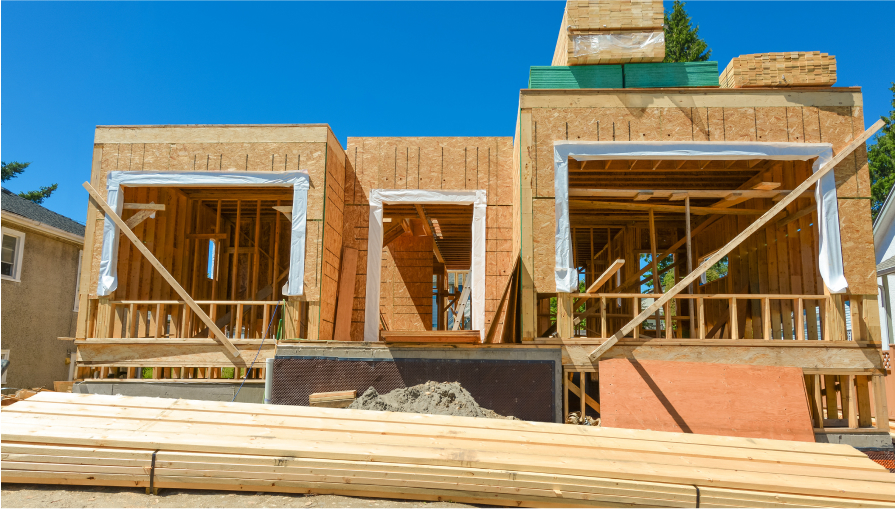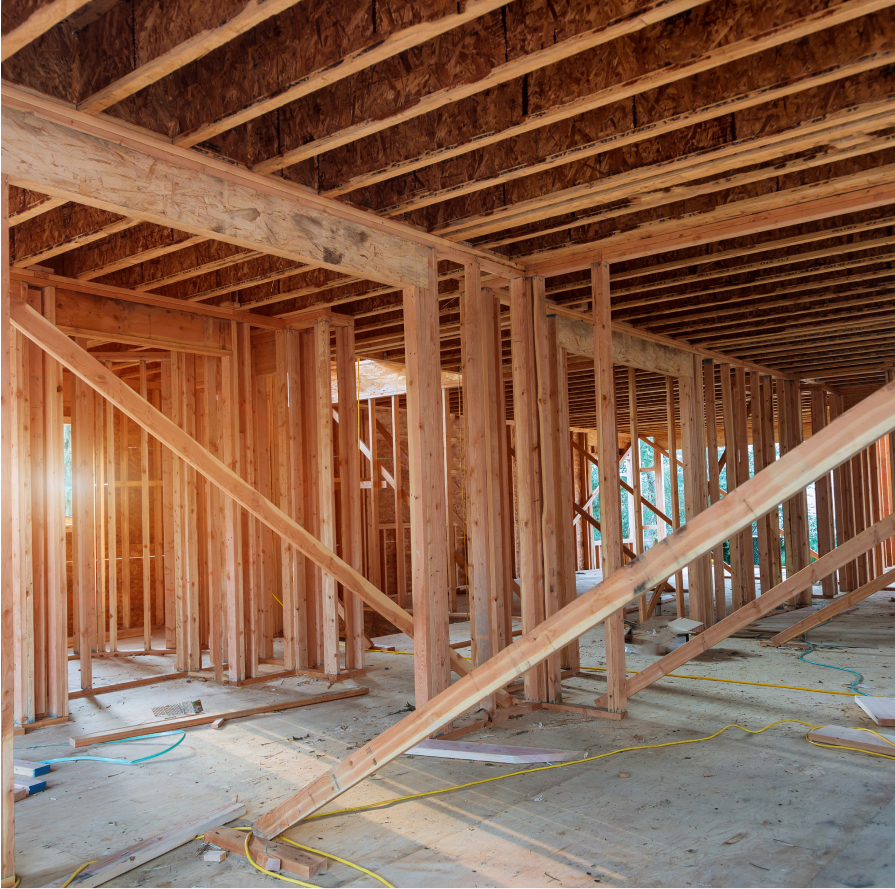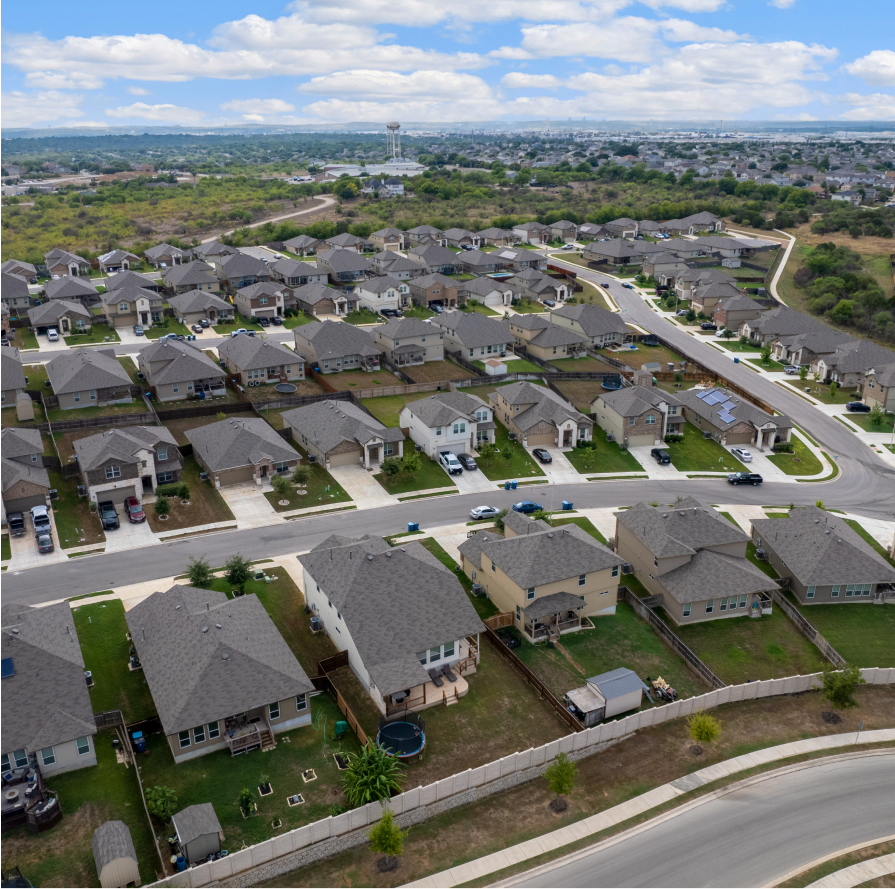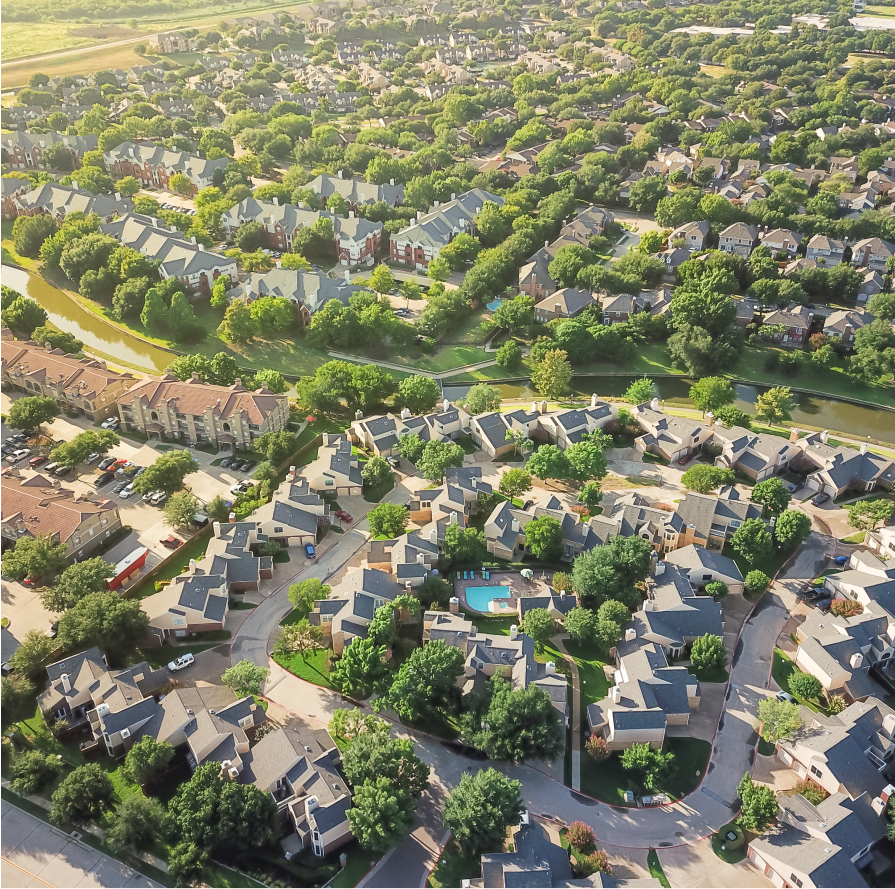Strata SFR is a specialized marketing and investment sales company that works with builders and developers to bring high-quality Build For Rent projects to market. As an industry leader in the Single Family Rental and Build For Rent space, Strata SFR has assembled an extraordinary network of the most active real estate investors and investment funds in the industry today. As an industry-leading investment sales brokerage and marketing firm, we engage with builders & developers to vet potential Build For Rent Communities and work hand in hand with our clients to structure attractive offerings, put those offerings in the right light, and then lead a sales and marketing effort to ensure the right investors take notice. The end result–deals get done and are always a win-win for our clients and the buyers who invest through us. Contact us today.

What Types of Build For Rent Do We Look For?
Horizontal Apartment Communities
- Projects built on a single lot, specifically designed as a rental community
- Highly amenitized to directly compete with multifamily properties
- Built to be solely operated as rental housing with homes designed to fit the specific needs of the overall community
- Designed and operated to be sold as a single asset
Single Site, Self-Contained Rental Communities
- Small-size projects from 30-80 units in infill locations
- Medium-sized projects from 80-125 units in “out fill” locations
- Large-sized projects from 125-250 in locations that are on the path of growth
Units “Pods” Within Larger Planned Unit Developments (PUDS) or Master Planned Communities
- Sections within mature communities that can be held as rental units
- Subdivisions split between retail-owned homes and investor-owned rental homes
- Builders selling units within retail-owned communities
- Builders selling remaining inventory within retail-owned communities
- Builders selling scatter-site new construction homes on individual lots across a single market
- Builders selling the last remaining units within a larger community
Short Term Vacation Rental Communities
Single Family Detached Homes, Townhomes, 2-4 Family Homes
When Does Strata Get Involved In a Build For Rent Project?
Ground-Up New Construction-Entitlement Phase
- Developers interested in exiting land positions early in the development process, generally at the end of the entitlement process when permits are eminent
Ground-Up New Construction-Lot Development Phase
- Developers interested in exiting finished lot positions during the “horizontal” lot construction phase
Completed Communities Delivered at Home Completion
- Projects that have completed units in a subdivision where no retail sales have been completed and the entire community can be held as rentals
- Projects that are currently under construction on units or will be starting unit construction soon that wish to forward contract with an end buyer
Stabilized Build For Rent Communities
- Communities of Single Family Homes and townhomes that have undergone an initial lease-up phase and are currently cash-flowing with an operating history.
What Can Builders and Developers Expect When Working With Strata On a Build For Rent Offering?
- Market Intel and Insight
- Project Review and Analysis
- Unit Pricing and Return Targeting
- Project Packaging/Offering Creation
- Project Marketing
- Buyer Targeting /Buyer Outreach
- Due Diligence Oversight
- Closing Oversight

What Are Some Key Considerations When Putting Together a Winning Build For Rent Offering?
The process of creating a community so that it can be sold as Build For Rent to a target audience of investors, which includes institutional investors and private real estate funds, encompasses a process that can start as early as the entitlement process, through to horizontal development and eventually vertical building and property operation and management.
Some key areas that a Build For Rent Brokerage helps with are:
Site Location Selection
The location of a project is the single most important factor in determining whether a project is attractive as a potential Build For Rent. There are a number of markets that investors have earmarked as places they are most interested in owning long-term rental communities. Strata SFR has over a decade of experience in working with these types of investors and has built a large database with intel gathered through deep relationships that help us advise our clients on what locations and in what markets are most highly sought after as B4R targets.
Project Size and Amenities
Investors have varying appetites when it comes to the size of potential Build For Rent Communities. Some investors have strategies that allow for the purchase and operate smaller communities with no or limited amenity packages that simply bolt on to larger scatter-site SFR portfolios. Others desire more traditional single-site communities that are large enough to include amenity packages with an onsite leasing office to be considered as a B4R acquisition. The audience of investors and what they look for vary greatly and part of the Brokerage service is helping developers and builders understand and gain access to the various audiences of potential investors.
Unit Sizes, Floor plans & Specification Levels
The types and sizes of the units for a given community will generally be driven by the demand for specific types of rentals in the market. Building units to meet this demand and capture a sustainable market share of potential renters is a key part of any good Build For Rent development.
Target Unit Pricing
Investors have a keen eye toward acquiring rental units that can produce target returns. Pricing units to achieve specific rents that drive these target returns is key to planning and delivering an attractive Build For Rent Community.
Offering Structure
Developers and Builders should provide an investment structure that will appeal to the audience of investors they wish to target with a new Build For Rent offering. This can include offering units as part of a straight takeout/sale. These opportunities can be structured in a number of ways, including land or lot sales with the builder offering fee build services, or via sales of completed units at a time when the units are delivered with a Certificate Of Occupancy or the sale of stabilized Build For Rent Communities with an operating history that can be measured. The various stages at which a developer/builder decides to exit the project will dictate the price and ultimate return that must be offered.
What is Build For Rent?
In general, the term Build For Rent refers to Single Family Detached Homes and Townhomes constructed with the intended purpose of the end-user holding the units as rentals versus selling them to homeowners. Build For Rent originated with the emergence of the Institutional Single Family sector, which has played a key role in popularizing Build For Rent, both as an asset class sought after by both large-scale institutional investors and smaller private equity-backed operators. Build For Rent is not a new concept, although its prevalence as a viable option for large-scale Single Family Rental investors has surged in recent years, originating from market conditions that have caused the cost of constructing new residential homes to be less than the cost to purchase already existing Single Family Detached Homes and Townhomes.
When Did the Build For Rent Trend Start?
The emergence of SFR as an institutional asset class was driven by the downturn of the US housing market in the late 2000s, where homes in the US could be purchased below replacement costs. The combination of low interest rates and rising rents created attractive risk-adjusted returns for investment capital to aggregate portfolios of rental homes across major markets in the US. As appreciation in the US housing market remained historically high during the 2010s across all major US housing markets, the option of building homes with the intent of turning them into long-term rentals, vs. aggregating portfolios of existing homes, became a more widely pursued strategy.
The tremendous growth of the Build For Rent sector and its appeal as a long-term, institutional asset class started to rank alongside other core commercial real estate asset classes, such as Multifamily, Retail, and Industrial real estate, and has continued not only because of attractive returns, but also the seemingly low risk the asset class offers, supported by the strong performance of U.S. residential housing both before and after the COVID era.

Why Has Build For Rent Become So Popular?
A key draw besides the risk and return profile of the asset class as a sector, is the operational and capital allocation efficiencies Build For Rent brings to those who own and operate units. Building new construction homes, whether those homes are built on individual lots outside of established communities, building subsections within existing communities, or constructing entire self-contained communities of Single Family Homes and Townhomes has proven to be an extremely efficient way to deploy capital into an asset class that is more efficient to operate than owning individual homes scattered across one or several geographies. Offering residents the option of living in new homes or new home communities has proven to be a highly sought-after option that has grown in popularity, driven by several demographic trends, including delayed family formation and the desire for increased vocational mobility.
What Are the Most Common Types of Build For Rent?
When people refer to B4R, they may be referring to a specific type of Build For Rent property type or ownership structure. Strata SFR is a purpose-built Single Family Rental and Build For Rent Brokerage, and has worked with owners, builders, and operators across a wide spectrum of property types in the Build For Rent segment. Below are several types of real estate and real estate projects commonly referred to as Build For Rent:
- Individual New Construction Homes
- Individually Platted, Self Contained Build For Rent Communities
- Pods/Units within Master Planned Communities
- Horizontal Apartments
Are Individual New Construction Homes Considered Build For Rent?
Many traditional builders view Build For Rent as one of two options when it comes to a target end-buyer audience for their new construction homes. In practice, most new construction homes built by traditional builders are built with a retail sale in mind. Retail, in this case, refers to building a home to appeal to an end user that will own the home themselves and not hold it as a rental.
It is common for traditional builders to consider selling a home to an investor in this case, who will rent the home out to a tenant vs living in the home themselves. While this type of sales strategy can be described as Build For Rent because the new construction home often is not designed specifically as a long-term rental unit, but instead is often built to appeal to homeowners, the title of Build to Rent is a bit of a misnomer.
Investors generally consider this type of housing unit as a New Construction Home purchase, and not B4R, and the attraction to this type of unit generally boils down to price. If this type of unit can be purchased at a price point that provides a target return vs. what an existing home can be purchased for, it will generally always be attractive, given that the home is new and will come with no deferred maintenance, and provide superior quality to a home that has wear and tear from previous ownership.
From the perspective of the builder/seller, this is often a good option if the investor can offer a high enough price or buy several homes in a single closing, allowing the builder/seller to reduce or eliminate the time, cost, and/or market risk associated with selling homes one at a time to retail home buyers.

Why Do Builders Decide to Sell Entire Subdivisions With Individual Lots As Build For Rent?
Individually platted, self-contained communities are what is most commonly implied when the term “Build For Rent” is used. Developers/Builders will often design a self-contained community that usually has its own Homeowners Association with the intention of either selling all units to a single buyer as Build For Rent or with the plan of building and selling homes individually to homeowners. The decision to sell the entire community as a Build For Rent Community is often a decision that is made prior to the start of vertical construction and comes down to several key factors that will push the builder in one direction or another.
Strata SFR works with builders and developers during the early stages of community construction to help our clients decipher the viability of the Build For Rent vs. retail sale options. Some of these key considerations are:
- End unit price point as a Build For Rent vs. Retail Sale
- Profit potential per unit as a B4R vs. Retail Sale
- Timeline to complete a B4R sale vs. Retail Sale
- Risk reduction that B4R offers
- Ability to achieve more attractive financing by selling as B4R vs. Retail Sale
- Overall company strategy utilizing B4R as a component to grow unit production & sales
Can Subsections Within Master Planned Communities Be Build For Rent?
Developers will often sell units or pods within Master Planned Communities, meaning a specific subsection of the community to a home builder. The strategy of most traditional builders in this case is to construct new homes on spec (build homes prior to their sale) to homebuyers or presale homes to homeowners and provide a number of options, including numerous front elevation and interior options.
This type of development often is a multi-year strategy and opens builders to market risk during the term of the community build-out and sale. Doing a Build For Rent in this type of community can offer Builders an option that comes with a number of benefits, but also comes with several considerations to take into account before deciding to pursue the Build For Rent path vs. the traditional home sale path. Some of these key considerations include:
- Can a sub-Home Owners Association (HOA) be created to protect the end owner of rental units in the subsection from rental restrictions that may be imposed later on by the master HOA?
- Will tenants in the Build For Rent section of the community have access to amenities?
- What are the entry and exit points to the section of the community and are those points of entry and exit in any way prohibitive to potential tenants?
- Can homes in the Build For Rent subsection be designed to fit with the look of the other homes in the master HOA and are the building requirements prohibitive from a cost standpoint in order to reach a per unit price that is attractive to end B4R investors?

What is a Horizontal Apartment Build For Rent?
Horizontal multifamily refers to single-family rental housing units built on small lots of land with high-end amenities and on-site property management staff. Unlike traditional multifamily buildings, the apartments are standalone buildings, without other units above or below. In some horizontal multifamily communities, residents share walls with their neighbors. While in other communities, each unit is entirely separate. In general, horizontal multifamily communities have 100 or more single-family housing units.
A Horizontal Apartment, unlike other types of Build For Rent, means the builder/developer must decide at an early stage to build on a single lot instead of each unit being individually platted. The benefits of doing this include more favorable tax rates since each unit within the community is not individually assessed from a tax standpoint, which can mean an overall lower tax rate for the community as a whole. Building a community on a single lot also allows it to be financed with more attractive traditional multifamily financing vs. specialized finance vehicles, providing investors with better returns.
The key drawback is the elimination of a potential retail exit at the end of an investor’s hold period. These communities will only sell as a single unit/project similar to Multifamily, in which pricing is dictated by prevailing market return rates (often measured by Cap Rate) and not valued like traditional residential real estate based on comparable value.




